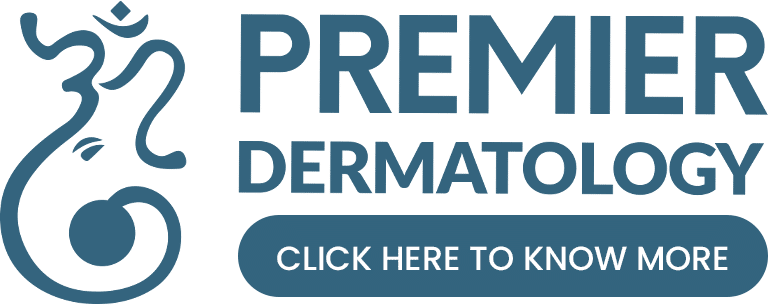For many individuals suffering from chronic sinusitis, balloon sinuplasty offers a beacon of hope. This minimally invasive procedure has revolutionized the treatment of sinus issues, providing relief without the need for traditional surgery.
During the balloon sinuplasty procedure, a healthcare provider gently inflates a tiny balloon within the sinus cavity, enlarging the space and allowing mucus to drain more effectively.
As you consider this treatment, understanding the recovery process is crucial. A smooth recovery is key to achieving optimal sinus relief and resuming normal activities quickly.
Key Takeaways
- Understand the recovery timeline and necessary precautions after balloon sinuplasty.
- Learn expert-recommended strategies for managing discomfort and proper nasal care.
- Discover how to ensure a smooth healing process and achieve optimal sinus relief.
- Find out when to contact your doctor during the recovery period.
- Get tips on resuming normal activities and maintaining a healthy lifestyle post-procedure.
Understanding Balloon Sinuplasty
For those suffering from chronic sinusitis, balloon sinuplasty offers a minimally invasive solution. This procedure is designed to treat sinus blockages effectively.
What Is Balloon Sinuplasty?
Balloon sinuplasty is a non-invasive surgical procedure performed to remove blocked sinuses. It involves inserting a small balloon catheter into the nasal passages to widen the airways, improving drainage and ventilation.
Why It’s Performed
The balloon sinuplasty procedure is typically recommended for patients with chronic sinusitis who haven’t responded well to medications. It’s an FDA-approved treatment that uses a flexible balloon catheter to open blocked sinus passageways.
Benefits Over Traditional Sinus Surgery
The benefits of balloon sinuplasty over traditional sinus surgery include less bleeding, minimal pain, and faster recovery. The procedure preserves the natural sinus lining and structure.
| Procedure | Traditional Sinus Surgery | Balloon Sinuplasty |
|---|---|---|
| Invasiveness | Invasive | Minimally Invasive |
| Recovery Time | Longer | Faster |
| Bleeding | More | Less |
What to Expect Immediately After the Procedure
Immediately after the balloon sinuplasty surgery, patients are taken to a recovery room for close monitoring. Here, medical staff keep a close eye on vital signs as the effects of anesthesia begin to wear off.
The Recovery Room Experience
Most patients experience mild grogginess, nasal pressure, and slight discomfort during this initial recovery period, which typically lasts 1-2 hours. The medical team will provide medication to help manage any pain or discomfort.
Going Home After Surgery
After a few hours in the recovery room, patients are usually ready to go home. It’s essential to have someone else drive you due to the lingering effects of sedation or anesthesia.
First 24 Hours Post-Procedure
During the first 24 hours after balloon sinuplasty, it’s crucial to follow your doctor’s instructions carefully. This includes keeping your head elevated and avoiding blowing your nose. Some drainage of blood-tinged mucus is normal, but excessive bleeding should be reported to your doctor immediately.
The Balloon Sinuplasty Recovery Timeline
Understanding the balloon sinuplasty recovery timeline is crucial for patients to manage their expectations and plan their recovery effectively. The recovery process involves several stages, each with distinct characteristics and milestones.
First Few Days
The initial days following balloon sinuplasty are typically the most uncomfortable. Patients may experience pain, swelling, and bruising around the nose, along with some nasal discharge. These symptoms are part of the body’s natural response to the surgery.
- Mild to moderate discomfort and nasal congestion are common during the first 48-72 hours.
- Bloody discharge may be observed as the sinuses begin to heal.
First Week
By days 3-5, most patients notice a significant reduction in pain and swelling. However, some congestion and drainage may persist.
- Patients are advised to maintain light activity levels and avoid strenuous exercise or heavy lifting during the first week.
- Situations that might increase nasal or sinus pressure should also be avoided.
First Month
After the first month, patients typically resume their normal activities, including work and exercise. The pain and swelling should have subsided significantly by this point.
Complete Recovery Expectations
Complete recovery from balloon sinuplasty usually occurs within 4-6 weeks. Patients should experience improved sinus drainage and reduced symptoms by this time.
- Attending all scheduled follow-up appointments is crucial for ensuring proper healing and addressing any concerns throughout the recovery process.
Managing Pain and Discomfort

Effective pain management is crucial after undergoing balloon sinuplasty to ensure a comfortable and smooth recovery process. While the procedure is considered minimally invasive, some level of discomfort is common during the recovery period.
Common Symptoms During Recovery
Most patients experience mild to moderate discomfort rather than severe pain following balloon sinuplasty. Common symptoms include nasal pressure, congestion, and occasional headaches. These symptoms are typically a result of the nasal passages adjusting to the changes made during the procedure.
Over-the-Counter Pain Relief Options
Over-the-counter pain medications like acetaminophen (Tylenol) or ibuprofen (Advil, Motrin) are typically sufficient for managing post-procedure discomfort and reducing inflammation. It’s essential to follow the doctor’s specific recommendations regarding pain medication timing and dosage to ensure safe and effective pain management.
When to Ask for Stronger Medication
If over-the-counter pain relievers are not enough to control pain, the doctor may prescribe stronger pain medications to be taken orally or via injection. Patients should be aware of the potential side effects and follow the prescribed dosage carefully.
Natural Pain Management Techniques
In addition to medication, natural pain management techniques can complement the recovery process. Applying cold compresses to the face for 15-20 minutes several times a day and using a humidifier to keep nasal passages moist can help alleviate discomfort and support healing.
By combining these strategies, patients can effectively manage their pain and discomfort, ensuring a smoother recovery from balloon sinuplasty.
Essential Rest and Activity Guidelines
To minimize potential complications and promote healing, patients must adhere to certain rest and activity guidelines post-balloon sinuplasty. Adequate rest is crucial in the initial stages of recovery.
Importance of Proper Rest
Adequate rest during the first 24-48 hours after balloon sinuplasty is vital for initiating the healing process and minimizing potential complications like bleeding or increased swelling.
When to Resume Daily Activities
Light daily activities can typically be resumed within 24 hours, but patients should listen to their bodies and rest when feeling fatigued during the first week.
Avoiding Strenuous Exercise
Avoid strenuous exercise, heavy lifting (over 10 pounds), and activities that increase blood pressure for at least 7-10 days to prevent bleeding and disruption of the healing sinus tissues.
Returning to Work Considerations
Those with desk jobs can usually return to work within 1-2 days, while patients with physically demanding occupations may need to wait 7-10 days or arrange for modified duties during recovery.
Proper Nasal Care During Recovery

To ensure a successful recovery from balloon sinuplasty, it’s essential to follow proper nasal care guidelines. Proper nasal care is crucial for healing and preventing complications such as infection or prolonged congestion.
Gentle Nose Blowing Techniques
Patients should avoid forceful nose blowing for at least 24-48 hours after the procedure. When necessary, blowing should be done very gently with both nostrils open to minimize pressure. Using a soft, clean tissue is recommended to prevent irritation or infection.
Saline Rinses and Sprays
Saline nasal sprays and rinses, such as NeilMed Sinus Rinse, should be used several times daily to keep nasal passages moist and clear of mucus or debris. It’s essential to follow the doctor’s specific instructions regarding technique, water temperature, and frequency.
Avoiding Nose Touching and Rubbing
Touching, rubbing, or inserting objects into the nose should be strictly avoided during recovery to prevent irritation, bleeding, or introduction of bacteria. Patients are advised to wear clothing that buttons or zips in the front to minimize contact with the nose.
Managing Nasal Discharge
Some bloody or mucus discharge is normal during the first few days. Patients should gently dab the nose with soft tissues rather than wiping or rubbing. This helps in managing nasal discharge effectively without causing further irritation.
| Nasal Care Activity | Recommendation |
|---|---|
| Nose Blowing | Gentle, with both nostrils open, using a soft tissue |
| Saline Rinses | Several times daily, following doctor’s instructions |
| Nose Touching | Avoid touching, rubbing, or inserting objects |
| Nasal Discharge | Gently dab with soft tissues |
By following these nasal care guidelines, patients can significantly reduce the risk of complications and promote a smooth recovery after balloon sinuplasty.
Sleeping and Head Position Tips
Sleeping with your head elevated is a critical aspect of the recovery process following balloon sinuplasty. This simple adjustment can significantly impact your healing by reducing swelling and preventing complications.
Benefits of Elevation
Keeping your head elevated at a 30-45 degree angle during sleep for the first 1-2 weeks after balloon sinuplasty is crucial. It helps in reducing swelling, preventing congestion, and minimizing pressure in the sinus cavities. Elevation also prevents blood from pooling in the nasal and sinus areas, reducing the risk of bleeding and promoting faster healing.
Recommended Positions
The most effective sleeping position is on your back with 2-3 pillows supporting your head and shoulders. Alternatively, using a wedge pillow designed for upper body elevation can be beneficial. While side sleeping is acceptable if back sleeping is uncomfortable, it’s advisable to avoid sleeping on your stomach as it can put unnecessary pressure on the nasal passages and sinuses.
Creating a Comfortable Environment
Maintaining a comfortable sleep environment is also important. Ensuring proper room humidity (between 40-60%) can help prevent nasal passages from becoming too dry during recovery. Some patients find using a recliner for sleeping during the first few nights provides more consistent elevation and comfort.
Diet and Hydration for Optimal Healing
A well-planned diet plays a crucial role in the recovery process after undergoing balloon sinuplasty. A balanced intake of nutrients can significantly contribute to a healthy post-op recovery.
Staying Hydrated
Proper hydration is essential after balloon sinuplasty, as drinking 8-10 glasses of water daily helps thin mucus secretions, making them easier to clear from the healing sinuses. Staying hydrated is vital for a smooth recovery process.
Soft Foods for Recovery
Patients should focus on consuming soft, easy-to-eat foods during the first few days to avoid excessive chewing that could create pressure or discomfort in the sinus areas. Ideal food choices include
- broths
- soups
- smoothies
- yogurt
- oatmeal
- scrambled eggs
- well-cooked pasta
,
,
,
,
,
, and
, which provide necessary nutrients without requiring significant chewing effort.
Avoiding Certain Foods and Drinks
Foods and beverages to avoid during recovery include spicy foods, alcohol, caffeine, and extremely hot items, as these can increase inflammation, irritate healing tissues, or expand blood vessels leading to increased swelling.
Nutritional Support
Nutritional support for healing should include foods rich in vitamin C (citrus fruits, berries), zinc (lean meats, nuts), and protein, which provide the building blocks needed for tissue repair and immune function.
Potential Complications and When to Call Your Doctor
While balloon sinuplasty is generally a safe procedure, understanding the possible complications and when to seek medical attention is vital. Like any nasal surgery, balloon sinuplasty has some commonly reported side effects, which typically subside with time.
Normal vs. Abnormal Symptoms
It’s essential to distinguish between normal recovery symptoms and potential complications. Normal symptoms include mild bleeding or blood-tinged drainage for 24-48 hours, nasal congestion, mild pain or pressure, and some swelling around the nose and eyes that gradually improves.
Warning Signs of Infection
Warning signs of infection that require immediate medical attention include fever over 101°F, increasing rather than decreasing pain, foul-smelling nasal discharge, or significant facial redness and warmth.
| Symptom | Normal Recovery | Potential Complication |
|---|---|---|
| Bleeding | Mild, blood-tinged drainage for 24-48 hours | Steady bleeding that soaks through more than a few tissues per hour |
| Pain | Mild pain or pressure | Increasing pain or severe headaches |
| Nasal Discharge | Clear or slightly blood-tinged | Foul-smelling discharge |
Excessive Bleeding Concerns
Excessive bleeding concerns include steady bleeding that soaks through more than a few tissues per hour or bleeding that restarts after initially stopping. If you experience such symptoms, it’s crucial to contact your doctor.
Persistent Pain or Swelling
Persistent pain or swelling that doesn’t improve or worsens after 3-5 days may indicate a complication that requires medical evaluation. Most complications from balloon sinuplasty, when identified and treated promptly, can be successfully managed without long-term consequences.
Conclusion: Enjoying the Benefits of Your Balloon Sinuplasty
Balloon sinuplasty offers a safe and effective solution for individuals suffering from chronic sinusitis. By following your doctor’s instructions and adhering to recovery guidelines, most people experience significant relief from sinus symptoms within 2-4 weeks. The long-term benefits include improved sinus drainage and reduced frequency of sinus infections. As you complete your recovery, you’ll notice improvements in breathing and sleep quality. Maintaining good sinus health through regular saline irrigation and proper hydration can help extend the benefits of your balloon sinuplasty, providing a better quality of life.


